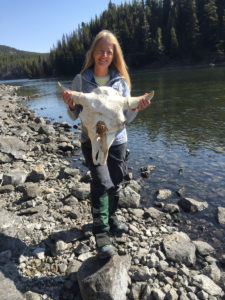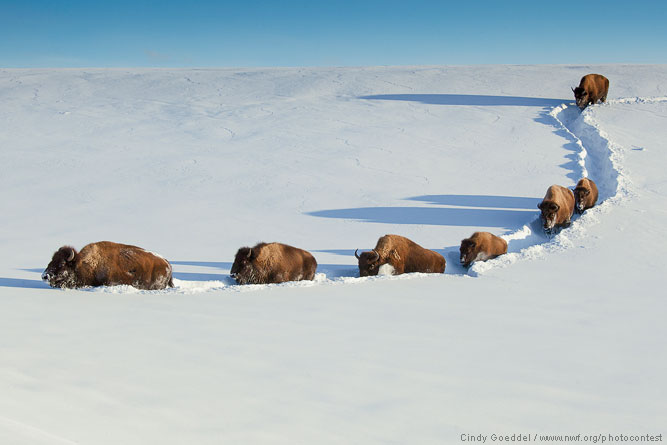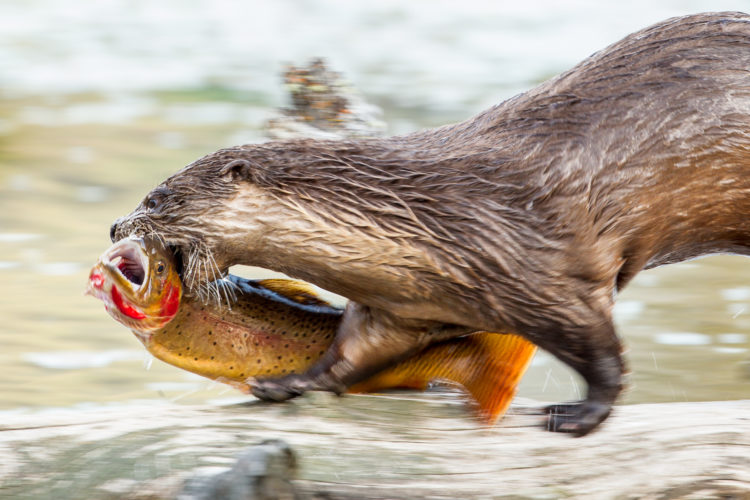We have much more to do and your continued support is needed now more than ever.
Bringing Wildlife Photography to Life
There are some things you never forget when you truly experience nature around you. The rush of excitement, the smells, the sounds, who you were with — it cements itself into your memory. I can tell you clearly, over a decade later, how a chill ran up the back of my neck when I witnessed the calving of a glacier in southern Argentina; I could hear it well before I came upon it, and looked up at the sky in confusion as the sun shone down… where was that thunder coming from? It finally hit me that it wasn’t above me, but in front of me, through the trees: gargantuan pieces of this fantastic structure were falling into the sea.

If I were a photographer, I could visually share that experience with others and make them understand how important it is to keep that glacier and the wildlife around it safe and untouched. But my snapshots do no justice to the life breathing in and out of that place.
That’s what Cindy Goeddel, one of the NWF members we are highlighting as part of this year’s National Wildlife Week, is able to do with the wildlife and wild places around her. We had the chance to chat with Cindy over email last week, and ask her about what photographing wildlife is like, and why she has chosen to share her images with us as part of the National Wildlife Photo Contest for several years.
NWF: What is it like to get up close to wildlife and capture them on film?
Cindy Goeddel: My passion is photographing wildlife, but to do so you must understand their ways. It is hard to explain how intoxicating it is to witness and discover first-hand how a wild animal goes about its life, whether it be searching for food, finding a mate, raising young or just frolicking. With each subject and changing season, I study, watch, wait and learn; and fueled by the anticipation of capturing a different behavior, I will return to the same subject and location time and time again. Knowing the animal allows you to anticipate, and gives the opportunity to try out new photographic techniques to grow one’s knowledge. Always, my goal is to capture and convey the spirit of the individual animal without disturbing its behavior. My favorite photographs tell a story and reflect the rhythm and harmony of the land and its inhabitants. I hope that they will inspire others to value and protect wildlife and wild places.
NWF: Why have you participated in the National Wildlife Photo Contest?
CG: I grew up captivated by wildlife. In 2005, as an empty nester taking up photography for the first time, I began my photographic journey. In 2009 I entered my first National Wildlife Photo Contest – I wanted to see if I could compete with “The Best.” To my utter astonishment, I won First Place in the Landscape Division, a milestone in my career, which gave me much needed confidence to pursue my dream of becoming a successful nature photographer. My photo Bison Breaking Trail was awarded First Place (Mammals) in the 45th annual contest in 2015 – another milestone!

NWF: What does conservation mean to you?
CG: Aldo Leopold said conservation “is a state of harmony between men and land.” I believe that we know far less of nature than we think, and that we have much to learn from its ways. In doing so, we become sounder stewards of the land and everything that inhabits it.
NWF: What does being a member of NWF mean to you?
CG: Wilderness and wild places are disappearing at an alarming rate for reasons that are neither compelling nor sound, unawareness playing a huge part in that decline. Education and involvement are vital if we are to preserve our wild places. In celebrating the marvels of nature in an accessible way, National Wildlife brings wonderment to many, but, most importantly, spreads the message of conservation. I am proud to be a part of supporting that campaign.

NWF: Tell us the story of this stunning otter photo.
CG: During the 2012 annual summer spawn of native Yellowstone Cutthroat Trout (Oncorhynchus clarkii), a female North American River Otter (Lontra canadensis) caught four Cutthroat Trout in the span of just a few minutes, delivering one to each of her three offspring. The fourth she ate herself. I have photographed otters at this location since 2006 and this was new behavior. Previously, the female adult would catch a trout with her young in tow, eat the fish and leave the young to scavenge for the scraps or eggs that fell into the water or onto the log where she ate. If they tried to grab a bite of the trout, the adult otter would spin away from her offspring and continue eating. What was different this year was that one of her young had an injured back, and had paralyzed back legs. He was able to swim, but unable to climb out of the water onto the log, so the mother otter caught a trout and placed it in a depression on a low floating log. Here it was trapped and, because each had its own trout, the little one could eat free from interference from its siblings. I utilized a slow shutter speed and panned to blur the background and to give a sense of motion.
Join Now





















